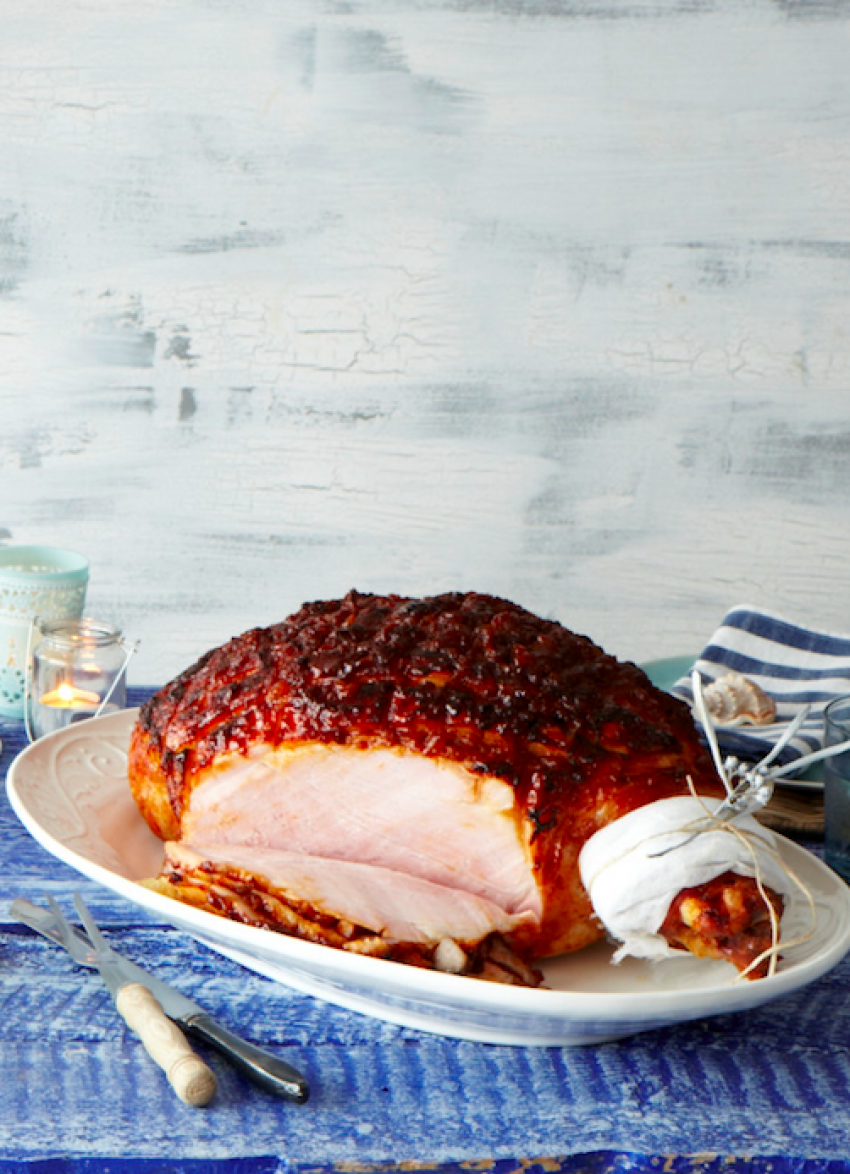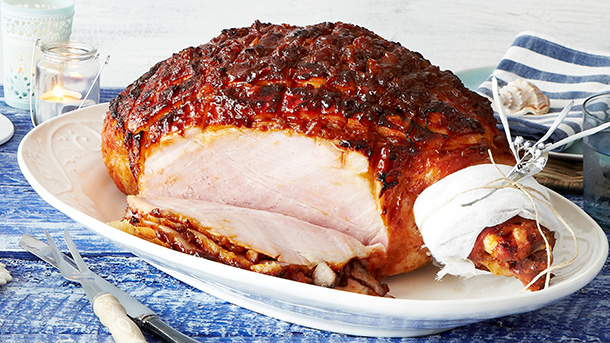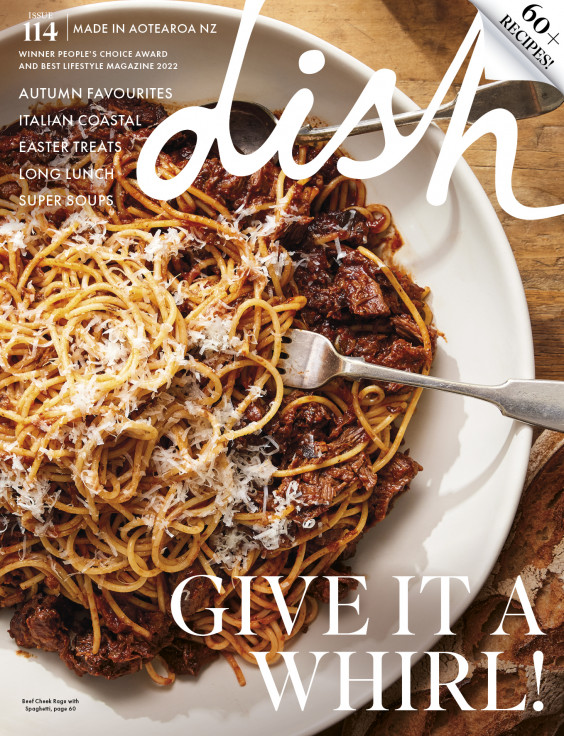A Twist on Tradition
Photography by Manja Waschmuth.

Ham and/or turkey at Christmas time is a tradition we never get sick of – especially when the options for glazes and stuffings just keep getting more and more delicious. We share two recipes that put a fresh spin on familiar favourites and give tips and advice to getting the most from your meat.
Smoky Mustard and Pineapple Glazed Ham
How do you improve a glorious free-range ham? With a tangy, sweet and smoky mustard glaze; perfect on Christmas Day and hopefully with some left over for casual lunches. Check out the recipe here.
A glazed ham is such a mouthwatering sight. To keep it neat and tidy on the plate, there are a few simple techniques for carving.
Before you start, remember to always use the right knife for carving and make sure it’s super sharp. Steer clear of electric or serrated knifes as these will create jagged slices.
To create a flat steady base, cut a couple of slices from the bottom of the ham.
At the shank end of the ham, make a vertical cut to the bone and cut a wedge out at a 45-degree angle. Make vertical cuts perpendicular to the bone, starting from the narrower end and working toward the thicker end and cut along the bone to release the slices.
Leftovers should be stored in a ham bag (or a new, clean pillowcase or tea towel). It needs to be soaked in a weak vinegar solution and should be rinsed and re-soaked in vinegar solution every three days or so.
Roast Turkey with Pecan and Orange Stuffing
This turkey recipe features a pecan and orange stuffing - what could be more delicious? Check out the recipe here.
Whether you have a family recipe you stick to every year or are ready to try out some new flavours, such as a delicious pecan and orange stuffing, there are a few key tricks to cooking the perfect roast turkey.
Firstly, the turkey needs to be at room temperature before it goes into the oven. You can prepare the stuffing in advance. When using the stuffing, don’t overpack it in to the cavity as this will make cooking time of the breast longer than what’s needed for the legs and they’ll become dry. Also, stuffing will expand on cooking. You can press the stuffing gently into the neck end, too, pushing it between the flesh and skin towards the breast. Tuck the neck flap under and secure with skewers and do the same for the main cavity.
If you’re not using an oven bag, wrap the turkey loosely in foil with the seam at the top so you can baste easily (to keep bird moist).
Even when following a recipe, it is important to note that ovens vary, as do the turkeys themselves, so you need to test if it is ready by either: using a food thermometer inserted into the thickest part of the breast, leg or centre of the stuffing – it needs to be a minimum of 80°C. If you don’t have a food thermometer, you can check by inserting a skewer into the thickest part of the thigh and if the juices run clear, the turkey is cooked.
Let the turkey rest before carving. To carve, you can cut the entire leg from the body and then again between the thighs and drums to separate them. Cut wings off by the joints and then insert knife on one side of the breast bone as close to the bone as possible and cut along the side of it. Use the knife to follow the rib cage and cut down under the breast meat, lifting it away from the rib cage. Repeat on the other side. You can then cut the breast meat into slices.
For more last minute festive inspiration head to the New World Festive Hub.
latest issue:
Issue #114
Autumn has arrived, and with it, the latest issue of dish, jam-packed with recipes that will have you fizzing to get in the kitchen! With a long Easter lunch featuring perfectly pink, blushing roast leg of lamb and wildly decadent baked mashed potatoes with caramelised onions, to simply scrumptious chocolate treats and sensational seasonal baking this issue has you covered - we reckon the Hot Cross Buns are our best yet! Salads make way for soothing soups, pies, puddings and our cover star beef cheek ragù with spaghetti – a must-make dinner for family and friends. With over 60 recipes in our latest issue there’s plenty of inspiration to keep you busy – and well-fed! Don’t forget to share your dish dishes with our Facebook community.

 BROUGHT TO YOU BY New World
BROUGHT TO YOU BY New World

